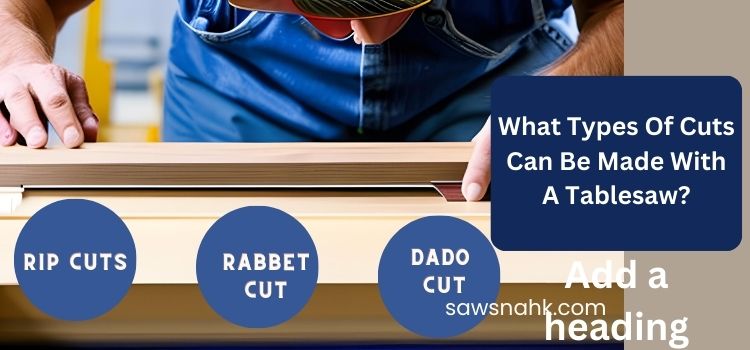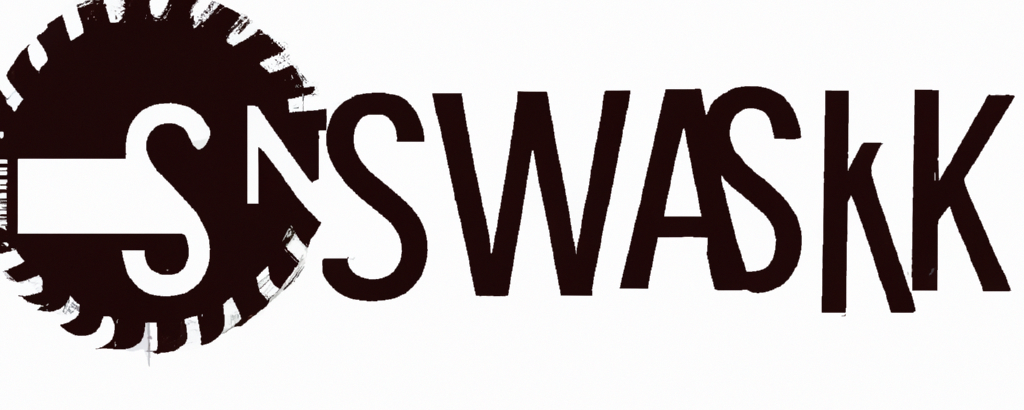What Types Of Cuts Can Be Made With A Tablesaw?

Imagine the table saw as your loyal ally in the world of woodworking. It’s an ally that provides both accuracy and flexibility while dealing with all kinds of cuts on wood. So, if you’re just starting your journey with a table saw or are just curious about what this power tool can do, you’re in for a treat! This article will take you on a tour through the realm of table saw cuts.
What Can You Achieve with a Table Saw?
A table saw is not just a cutting tool—it’s a tool for creation. It can create a variety of cuts, including:
Rip Cut: The Basics of Wood Cutting
Think of rip cuts as the bread and butter of table saw cuts. These cuts go along with the grain and are typically used to resize boards, create strips, or transform large timber pieces into more manageable planks. The key to a successful rip cut lies in adjusting the distance between the rip fence and the blade, ensuring a smooth and precise result.
Cross Cut: The Art of Precision
Unlike rip cuts, cross cuts go across the grain of the wood, providing a neat and squared-off finish. You’d use these cuts when you want to shorten a piece of wood or give it a clean edge. With the help of the miter gauge on your table saw, you can master cross-cuts in no time!
Miter Cut: For That Picture-Perfect Frame
Miter cuts are all about angles. These cuts, usually set at a 45-degree angle, allow you to create picture frames, mouldings, and other intricate pieces. With a miter gauge or sled, achieving the perfect miter cut becomes a walk in the park.
Bevelled Cut: Add a Touch of Depth
If you’re after an angled edge on your piece of wood, bevelled cuts are the answer. By tilting the blade of your saw, you can create a sloping surface that adds a whole new dimension to your project. Bevelled cuts can be used to make chamfers, which are a nice addition to cabinets and tabletops.
Rabbet Cut: Perfect for Groovy Edges
Rabbet Cuts Are Your Go-To For Creating A Groove Along The Edge Of Your Wood Piece. They’re Essential For Joinery And Can Be Used To Make Anything From Cabinets To Drawers. Rabbet Cuts Provide A Clean And Secure Fit That Makes Your Projects Look Professional.
Dado Cut: The Ultimate Groove
Think Of Dado Cuts As The Wider, Flatter Version Of Rabbet Cuts. They’re Used For Creating A Groove Where You Can Fit Shelves Or For Joinery Purposes. With A Dado Cut, You Can Easily Create Seamless And Strong Connections Between Pieces Of Wood.
Conclusion: Creativity with a Table Saw
With its versatility, a table saw is truly a woodworker’s best friend. From basic rip cuts to more intricate dado grooves, this powerful tool enables you to bring your woodworking visions to life. Whether you’re a professional woodworker or a DIY enthusiast, understanding the capabilities of a table saw will open up a world of possibilities in your projects.
FAQS:
Can a table saw make angled cuts?
Yes, a table saw can make angled cuts, such as miter cuts and beveled cuts.
What safety gear should I wear when using a table saw?
When using a table saw, it’s essential to wear safety goggles, hearing protection, and dust masks to protect your eyes, ears, and respiratory system.
What is the purpose of a dado cut?
The purpose of a dado cut is to create a wide, flat-bottomed groove across the wood, often used for joinery or inserting shelves.
